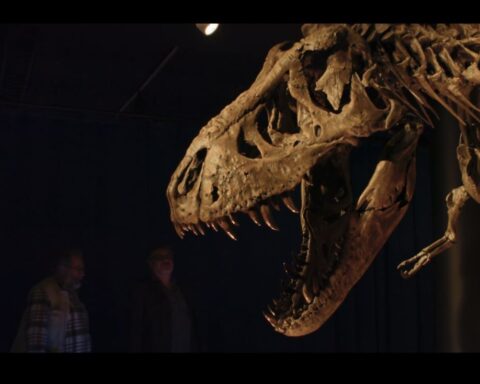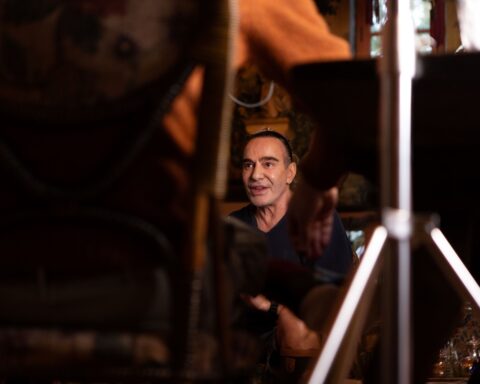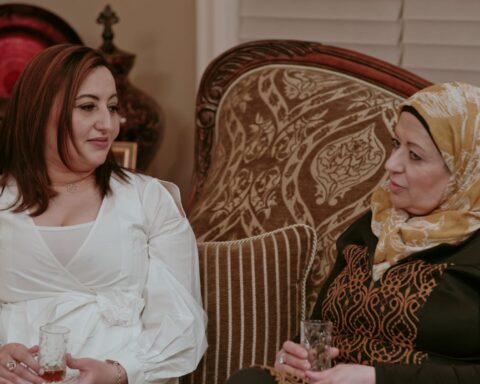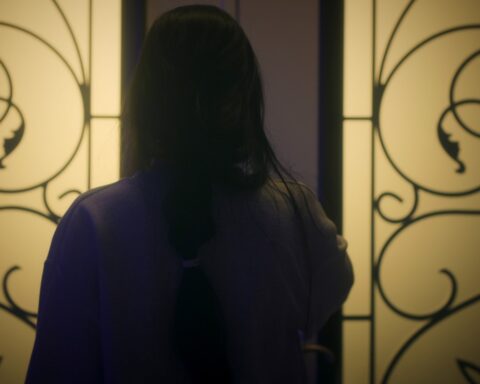The bottom dropped out of the recorded music business some time ago, but box-office for performing arts documentaries has never been better. Films like Amy (2015), Janis: Little Girl Blue (2015), Muscle Shoals (2013) and Searching for Sugar Man (2012) are introducing audiences to music and showing them new ways to understand and appreciate it.
The genre had a brief golden age in the 1960s, beginning with Don’t Look Back (1967), D.A. Pennebaker’s account of Dylan’s 1965 U.K. tour, onstage and off. Like a Dylan song, the film was both plainspoken and cryptic, layered with nuance and meaning. It was a portrait of an artist on the cusp of his own electric revolution, just as the film signaled the birth of a new form, the verite feature-length theatrical rock doc.
More live performance films followed, including Steve Binder’s rock and soul extravaganza, The T.A.M.I. Show (1964), Pennebaker’s Monterey Pop (1968), the Maysles’ Gimme Shelter (1970) and Michael Wadleigh’s Woodstock (1970). In an age of transistor radios, the big screen delivered a large and loud musical experience to the many excellent movie houses of the time. Rock docs helped to define and disseminate a burgeoning counterculture and elevated the status of artists like Janis and Jimi to that of superstars.
There were others, but none had the impact and financial clout of a Woodstock or Monterey Pop. Or the distribution. Inspired by both music and filmmaking, my contemporaries and I searched for more films like these, but they were scarce.
When it came to American—and, indeed, Canadian—TV, pop music got no respect. Performers routinely stood in place and lipsynched to their latest hits on Shindig and American Bandstand. The prevailing attitude was similar in the U.K., where broadcasters featured popular music with such bland titles as Top of the Pops and Juke Box Jury. But one thing British television had that U.S. TV did not was a home for documentaries on the lively arts, like classical music, theatre, dance and opera. But again, no home for rock ’n’ roll. Not until Tony Palmer came along.
The novice BBC director had just completed Benjamin Britten and his Festival in 1967 when a friend challenged him to help introduce stodgy BBC audiences to the new wave of pop music that got no airplay on TV. The friend was John Lennon, and the project, All My Loving (1968), gave Palmer enviable access to Lennon’s Beatles and his pals Jimi Hendrix, Frank Zappa, Pink Floyd and The Who.
Palmer pitched the show as a basic pop primer for a late-night BBC slot, but he delivered something far more experimental and aesthetically aggressive. It was a musical and visual collage of unsettling imagery: newsreel footage of Vietnam War atrocities, police violence and civil unrest, cross-cut with the likes of The Who climaxing a performance by destroying the stage and their instruments.
All My Loving was a 50-minute barrage of music, revolution and culture that encapsulated Palmer’s vision of 1960s rock music as the tension between idealism, naiveté and commerce played out. It precipitated a stir in the press, and internally within the BBC brass. And it signaled an artistic and cultural turning point for pop music on British television, daring to treat pop and rock with the same respect afforded classical music.
Over the next few years, Palmer was prolific, moving effortlessly through rock, pop, theatre, opera, ballet, composition and performance, filming with the likes of Fairport Convention, Leonard Bernstein, Liberace and Leonard Cohen.
Palmer showed he could employ a range of styles during this early period in the ’70s. His films vary in approach from casual observation to formal portraiture, but all are entertaining and enlightening. Some musical performances are staged specifically for the camera and shot from various angles over multiple takes. Others take place in a theatre before a live audience as Palmer’s crew filmed with multiple cameras from fixed vantage points.
A multi-camera director has two objectives when planning and executing live event coverage, whether it’s following the puck on the ice at the Bell Centre or blocking an opera performance for Live from the Met. The objectives are to intensify and clarify. The director becomes an advocate for the audience, bringing them closer so that they can see things clearly, visually and emotionally.
There’s a sequence in his documentary Cream’s Farewell Concert (1969) that demonstrates Palmer’s own distinctive approach to these principles. His cameras have been positioned for his chosen perspective on the performance, but they are limited and cannot move. For the most part, he lets the group control the energy. The superstar performers plotted the dramatic arc of the concert by changing keys, tempo, or soloists to create emotional peaks and valleys that would build to an eventual climax.
A documentary must do the same thing by employing its own devices. In order to dramatise the experience, the filmmaker needs to get off the confines of the stage. We’ve all seen the rock doc clichés that accompany that move—audience interviews, historical perspectives, backstage hijinks or groupie debauchery.
Tony Palmer goes backstage too in Cream’s Farewell Concert, but it’s for a chat with Ginger Baker, sitting at his drum kit. Palmer urges him to demonstrate the rudimentary drum patterns he had to practice when he was learning how to play. Baker begrudgingly complies and Palmer then pushes for more: on different drums, then with the bass pedals, then on the cymbals. It is one long continuous take that runs five minutes—a film lifetime, then and now. But it’s an investment that pays off in a surprising way.
As Baker plays and builds upon these simple patterns, the very nature of his style becomes deconstructed. The drummer’s immense contribution to Cream comes clearly into sharp focus. Our appreciation of the music before and after is intensified.
Even in films about non-musical subjects, Palmer always begins with music—a process he learned early in his career working with the controversial director Ken Russell. “I always say the most important two things,” opines Palmer, “The obvious one: No detail is too small. And as far as music is concerned, you treat the music with respect. Music in my case always is the main narrative drive of the film. It’s not decoration. Music for me is always part of the story. Even if the audience doesn’t pick up all the references, I don’t really mind that…all the references are there for me.”
Music was the driving force of one of Palmer’s most ambitious projects. It was inspired by John Lennon following a chance encounter on a street in New York. “He pointed at me from across the street and said ‘you again,’” Palmer remembers, “And then he said a wonderful line, ‘Are you doing anything useful these days?’”
This was in the fall of 1972, at a time when the BBC was about to broadcast Alistair Cooke’s America and had scored an international success with the 13-part series, Kenneth Clark’s Civilization. Lennon told Palmer he had an idea for another series, which would be on “arguably the most important cultural influence in the 20th century, American pop music. Surely if they [the networks] can do 13-part series [like Civilization], we should do ours.
“We made a list: What’s ragtime? Where did it come from? Blues, jazz, swing and so on. And…as soon as we made the list, Lennon swept out, because he had to go somewhere, and he just turned back. ‘By the way, he said, I’ve got the perfect title for you. Call it All You Need Is Love.’”
All You Need Is Love: The Story of Popular Music became Palmer’s magnum opus. It ended up being a 16-part series, which was broadcast initially on ITV in 1977. Instead of hiring a team of researchers to wade through a century of the many forms of American popular music and write a script, Palmer sought out experts who were immersed in the individual musical forms. He commissioned them to write personal essays on their areas of experience and expertise.
Derek Taylor, the former press manager for The Beatles and later The Byrds, composed an essay on the rise of Beatlemania and the effects of the British Invasion. It helped focus the narrative, provided casting suggestions and served as a guide for Taylor’s on-camera interview. In the end, it’s his biting, funny and insightful observations that imbue that particular episode with credibility and emotional weight.
When asked why he commissioned authorities like Taylor, Palmer replies, “They were not the narration of the film but they helped me really to focus on what a world renowned expert like [jazz critic] Rudi Blesh felt was really important about ragtime.
“He led me straight to Scott Joplin’s opera Treemonisha and how important that was and so…quickly we arranged to have various bits [of Treemonisha] filmed. And jazz starting in the brothels of New Orleans, which Al Rose led me to…it’s taken for granted now, but it was not generally known or understood then.
“So…that was a really expensive primer for me. But I thought it was really important. And the other thing that I realised when I’d got those 16 essays back was, in a strange kind of way, all these subjects were related, not just musically.”
Other contributors included Nik Cohn, Lester Bangs and Steven Sondheim, who wrote the essay on American musical theatre and also figures prominently in that episode. Shot in the mid 1970s, Palmer managed to interview many of the surviving greats and find rare and revealing performance archives of artists like Bing Crosby, Jerry Lee Lewis, Bo Diddley, John Hammond, Pat Boone, Donovan, Jerry Wexler, Phil Spector, Frank Zappa, Hal Prince and Bob Fosse.
There is no narrator. The historical narratives are constructed from extensive interviews with the artists and through performances, many presented in full rather than as quick clips. The approach demonstrates a respect for the music and the artists that is rarely encountered in a series so sweeping and ambitious. “Stardust” composer Hoagy Carmichael, for example, sits at the piano demonstrating and sharing the story of his first encounter with a “blue note,” how it “made his head explode” and changed his life (and changed popular music).
All You Need Is Love made a lot of heads explode. It was a revelation: a weekly immersion into a delirious deconstruction of a century and a half of popular culture that made us look at music and the world with fresh eyes. Mysteriously, the series was never played on American television. My first encounter with it was in Canada on TVOntario the year after it was released. As a music and film geek, I was immediately hooked. I went on to research the series creator and found I had already encountered some of Tony Palmer’s work. I’d seen Cream’s Farewell Concert as well as Frank Zappa’s 200 Motels movie (1971), which Palmer directed. And I’d read his book The Trials of Oz, about the 1971 obscenity trial of the editors of the UK underground magazine Oz.
I realised that I’d found a prolific and multi-talented director. And I’d only scratched the surface. Tony Palmer has made over 100 films about performers and composers from all genres. But because there has historically been very little shelf space for arts documentaries on television in Canada and the U.S., there have been few opportunities to see his work.
Tony Palmer is among the few who led the way, defining the performing arts doc genre. He continually finds new ways of presenting performances and he gets deep inside the psyche of his subjects—learning how they make their art and why. His work deserves wider recognition; Palmer is a true doc auteur.









